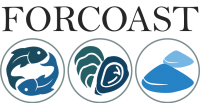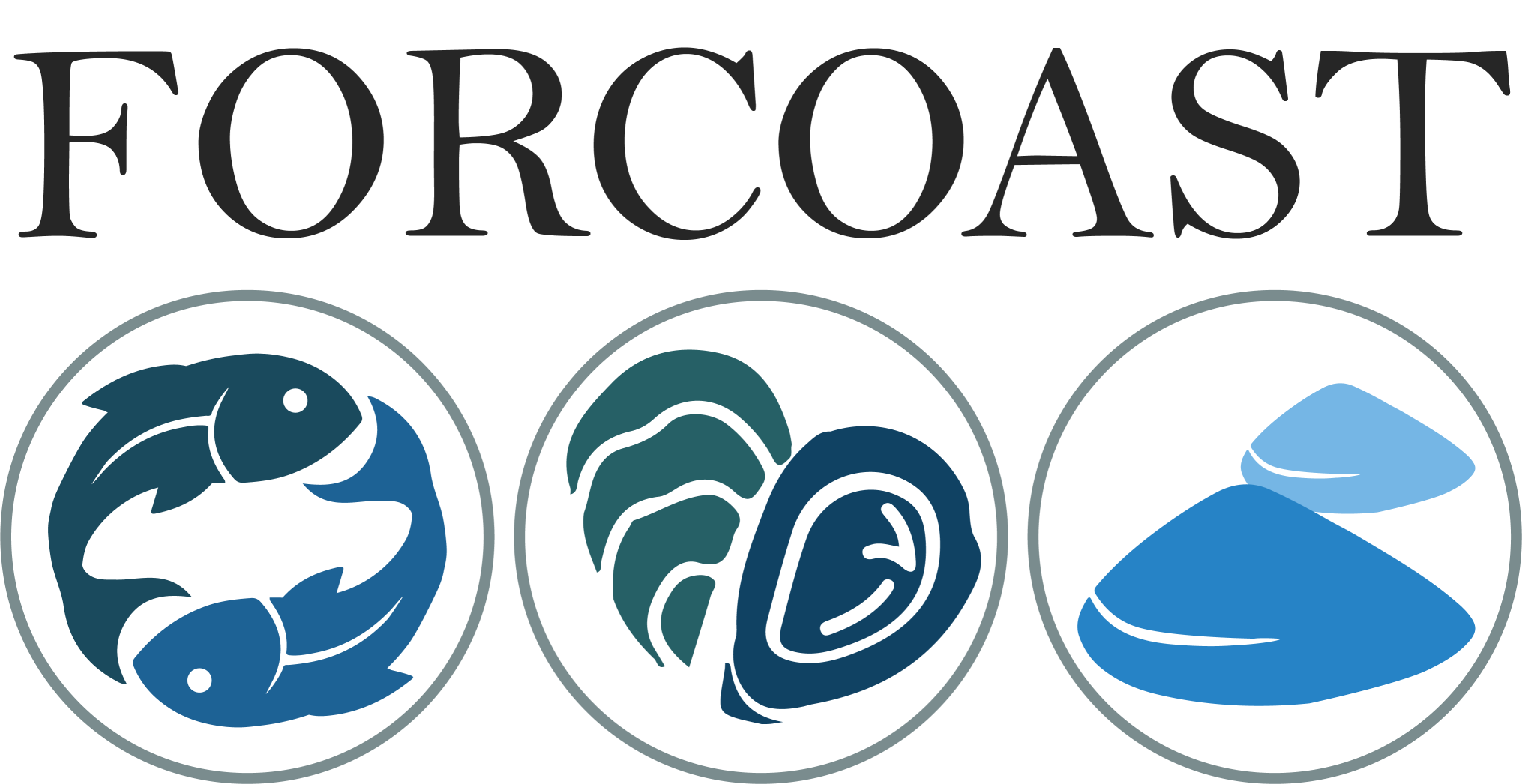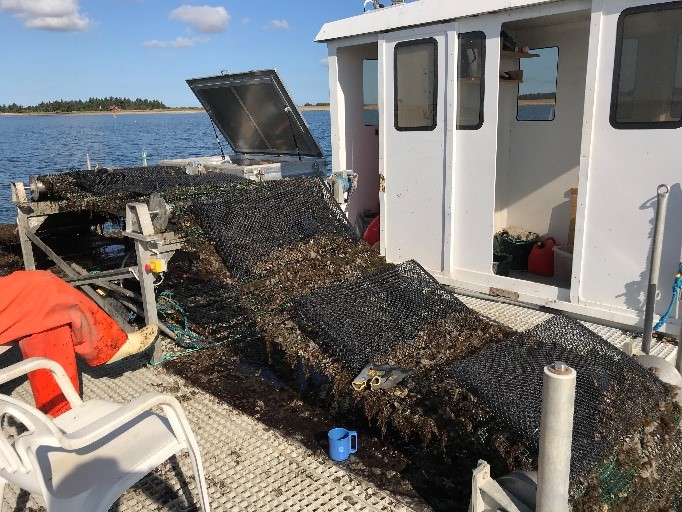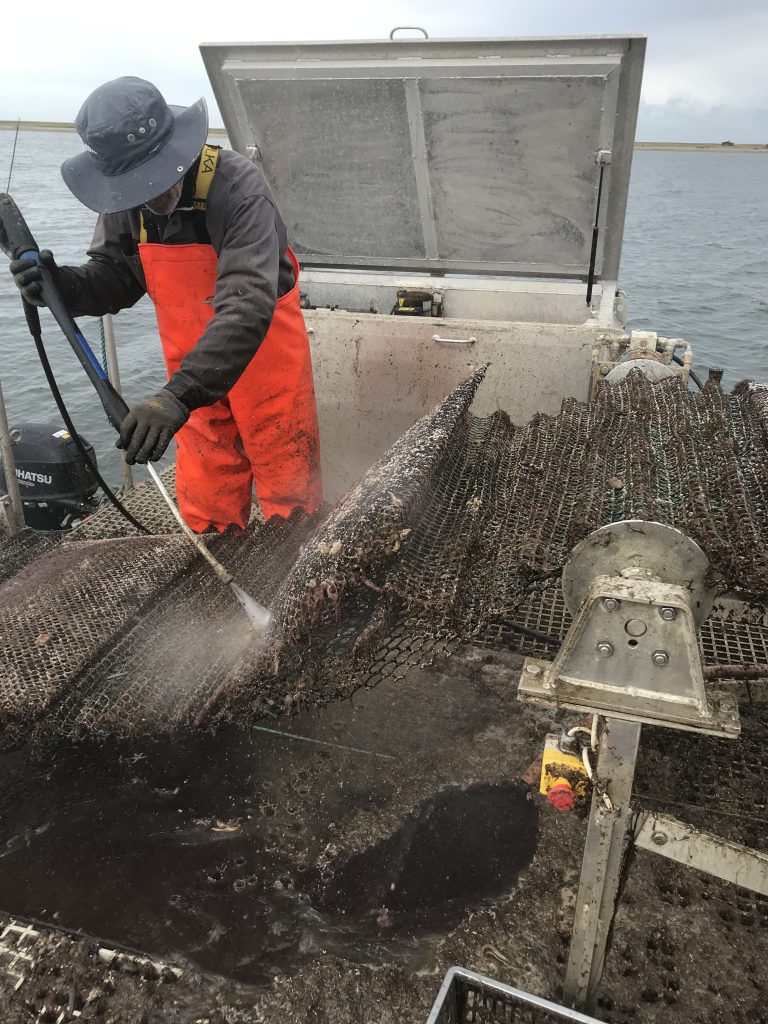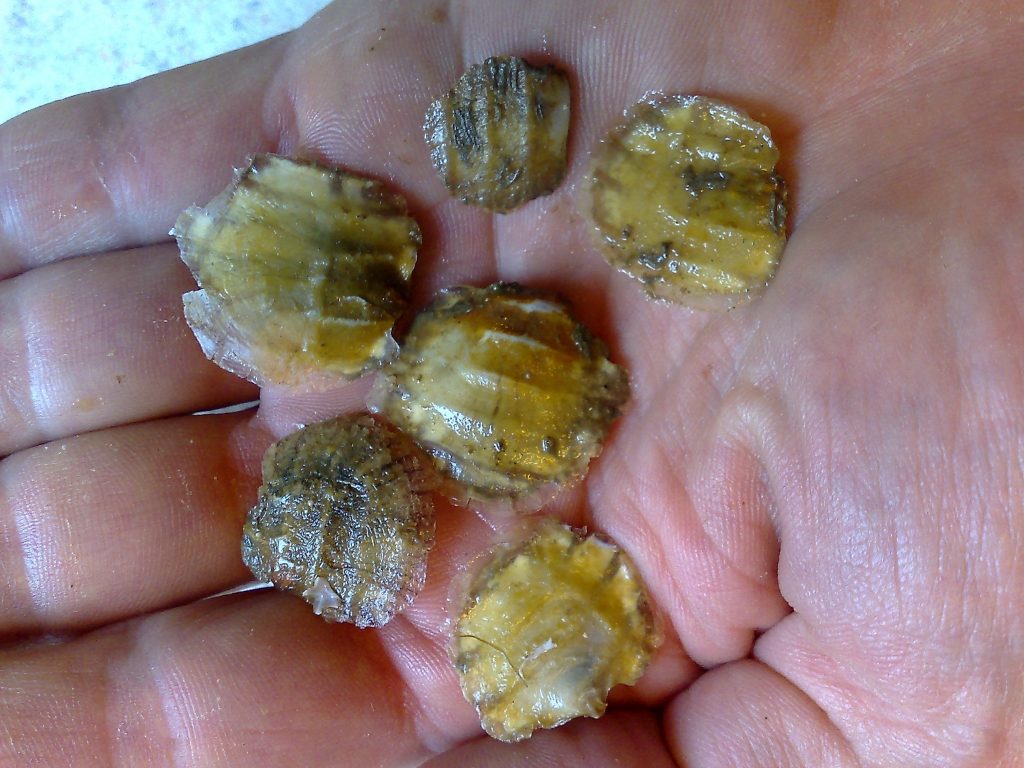Nissum Broad and Lem Vig, on the West coast of Denmark, constitute one of the finest Flat Oyster environments in Europe. In 2008 the area produced the largest output of Flat Oysters in Europe. European Flat Oyster, Limfjords-østers, Whitstable Oyster, Belon Oyster or Ostrea edulis are all identical names for the same exclusive oyster species. Production and fishery fell sharply around 1920, and was substituted by Portugese oysters and later the dominating Pacific oysters of today. The flatoyster is stronger and has a more firm texture than Gigas Oysters.
Since 2008 Oyster Boat ApS, OBA, has developed a prototype aquaculture of Flat Oysters at Kulturfelt Follup Odde, KFO, shellfish plot 242, in Lem Vig. Most of the European production of oysters relies upon French tidal aquaculture of Pacific oysters. OBA has adapted this technology to the non-tidal environment of Nissum Broad. From 2012 to 2015 a steep uphill development based on bedmounted carrier belts has been completed. Bedmounted carrier belts is the unique aquaculture patent of OBA. In January 2015 OBA became a subsidiary of JEKA GROUP, https://jeka-group.com/companies-and-brands/ , in Lemvig. The aim of this cooperation is to develop a unique prototype aquaculture into a major European primary producer of organic Flatoysters.
From March 2015 OBA has been operating according to the Danish/EU Ecology Standards on seafood, environmental protection, sustainability and recycling of resources. From April 2015 OBA has tended the largest broodstock of Flatoysters in Europe at its KFO oyster plot.
It takes 4 years to raise an organic Flatoyster. Oyster Boats first cultured “calibre 0” oysters were presented in 2014. Oyster Boat is sold out in 2019, but will be offering app. 4500 kg of Flatoysters in 2020, increasing to 48000 kg in 2023. To maintain an affordable oyster, the work is mechanized and managed by a full-time staff of 3 craftsmen. Oyster Boat is a wholesale primary producer. Oysters will be on sale from Nordisk Krabbe Kompagni and other selected shellfish specialists.
Data used in this pilot area are based on two models. The FlexSem-ERGOM model by Aarhus University for hindcast validation of water biogeochemistry data and the HBM model by DMI for validation the of water physiological data.
